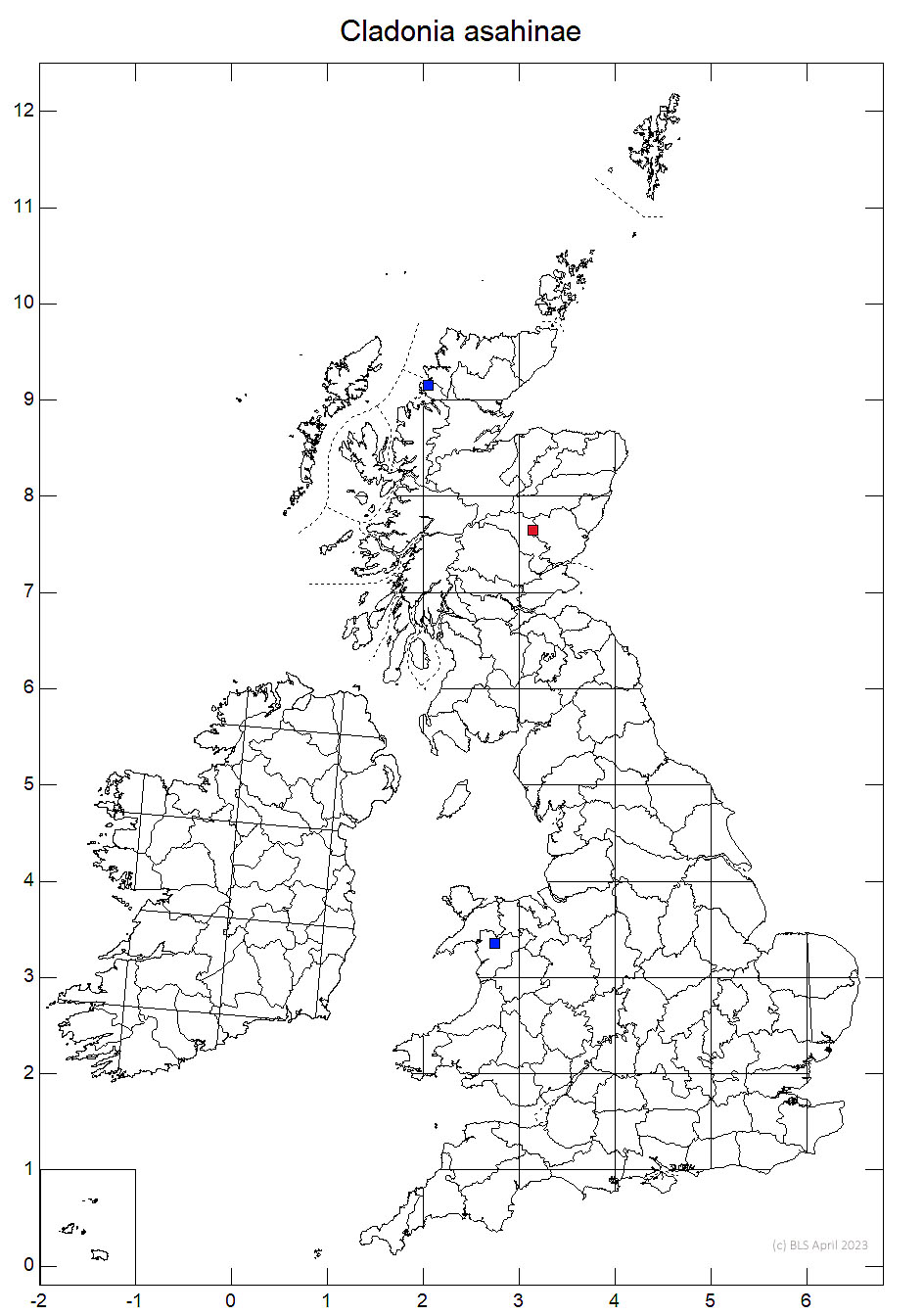A Pixie Cup within the difficult Cladonia grayi group, and included in the Cladonia chlorophaea s. lat. morphocomplex. The Cladonia grayi group can generally be distinguished from Cladonia chlorophaea s. str. by the browner colours, the exposed medulla pinkish brown and the presence of K and C reactions and UV fluorescence. Cladonia asahinae is an exception, in that it has no spot test or fluorescence to pick it out from Cladonia chlorophaea s. str. The species is not likely to be common but is also likely to be very under recorded.
Similar to Cladonia grayi, but the often slender podetia are covered irregularly with finer granules and soredia, and with small ± persistent squamules with crenulate margins at their base. With similar spot reactions but different chemistry and UV–. Thallus C–, K–, KC–, Pd+ red, UV– (rangiformic, norrangiformic and fumarprotocetraric acids).
Part of the Cladonia grayi group within the Cladonia chlorophaea s. lat. morphocomplex. lt could well be under-reported, and identification using TLC or sequencing is recommended. Populations elsewhere have varied chemotypes (Brodo & Ahti 1996), and C. asahinae could be a species complex in itself.
On peaty soil and on the base of a Salix trunk

Reported from Wales (Merioneth) and Scotland (Perth, W. Ross).
Pino-Bodas, R., Sanderson, N., Cannon, P., Aptroot, A., Coppins, B., Orange, A. & Simkin, J. (2021). Lecanorales: Cladoniaceae, including the genera Cladonia, Pilophorus and Pycnothelia. Revisions of British and Irish Lichens19: 1-45. Link
Text by Neil A Sanderson, based Pino-Bodas et al (2021)
